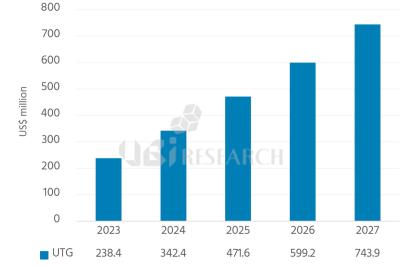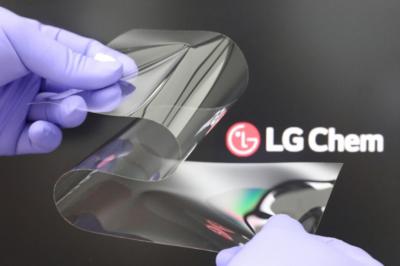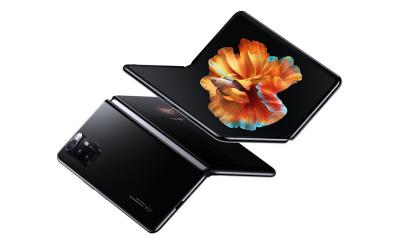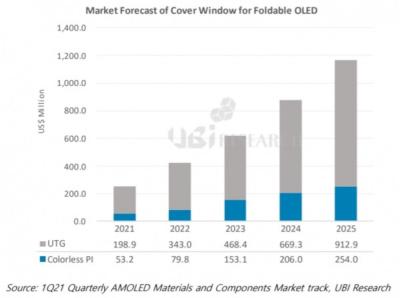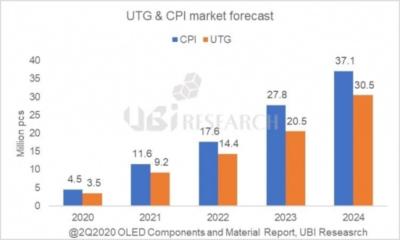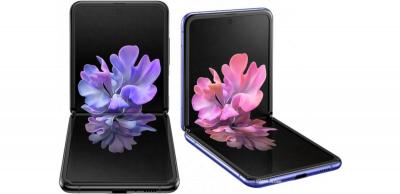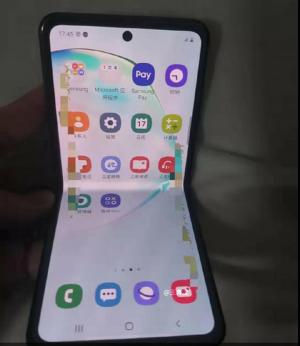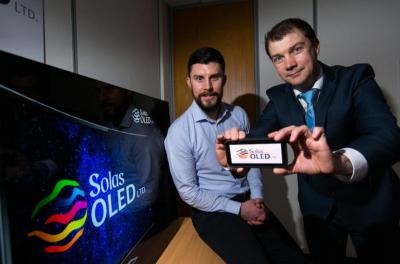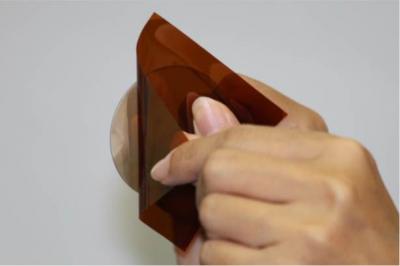UBI: the foldable OLED market will grow to 61 million units by 2027
UBI Research estimates that the foldable OLED market will reach 22 million units in 2023, and will grow to 61 million units by 2027, a CAGR of 29%.
UBI also published a forecast on cover material market for foldable OLEDs - this market will also expand, and will grow to $840 million n 2027. UBI says that the market share of ultra-thin glass will grow, as Samsung will only produce foldable OLEDs with UTG in the future, and other makers including BOE, CSoT and Visionox are developing UTG panels.
